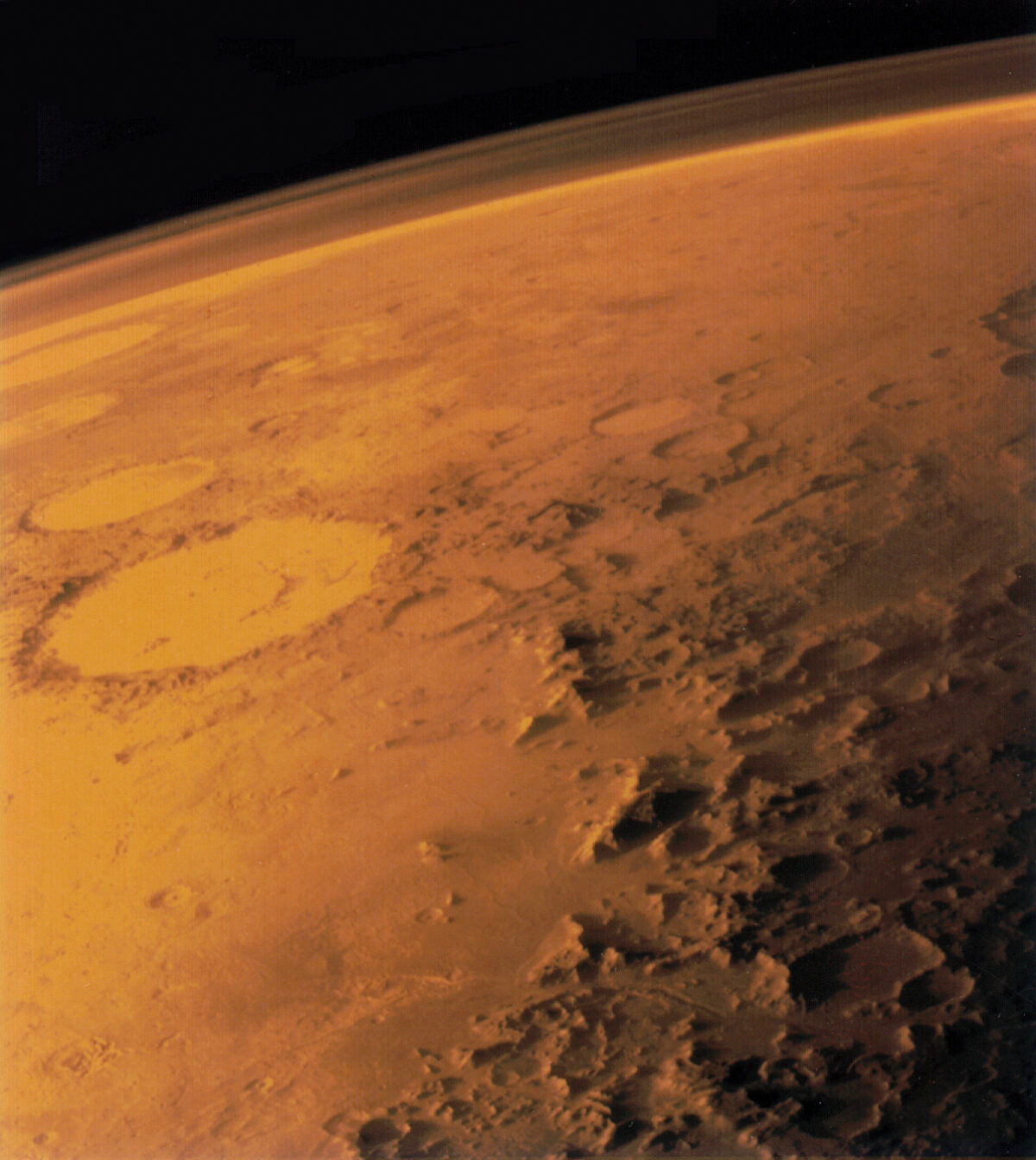On 14 September 1997, NASA’s Mars Global Surveyor spacecraft dipped into the Red Planet’s thin atmosphere, the first of many passes meant to shorten the satellite’s orbital path. For the next 5 months, the satellite periodically cruised through the thicker layers of the upper atmosphere and the wispy exosphere. The satellite’s elongated orbit gave its sensors a good look at a broad swath of Mars’s extended hydrogen exosphere.
Using magnetic field observations, researchers measured the prevalence and properties of ion cyclotron waves in Mars’s exosphere—electromagnetic waves sparked when the solar wind interacts with the exosphere. In their study, Wei et al. revisited those observations to provide an updated assessment of ion cyclotron waves in Mars’s exosphere.
Using a new analytical technique to reduce noise and improve data accuracy for low background magnetic field strengths, the authors determined how ion cyclotron waves vary with altitude, magnetic field strength, and the angle between the solar wind velocity and the magnetic field. Compared to their previous work, the authors’ updated investigation suggests that ion cyclotron waves are generated in both the positive and negative sides of electric fields, but with larger occurrence on the positive side.
Like Earth’s exosphere, Mars’s is populated predominantly by neutral hydrogen atoms. However, unlike Earth’s, Mars’s atmosphere has been slowly stripped away by the inflowing solar wind over the past few billion years. Measuring the generation of ion cyclotron waves, the authors suggest, could give a way to measure ongoing Martian atmospheric loss. (Journal of Geophysical Research: Space Physics, doi:10.1002/2014JA020067, 2014)
© 2014. American Geophysical Union. All rights reserved.
© 2014. American Geophysical Union. All rights reserved.

